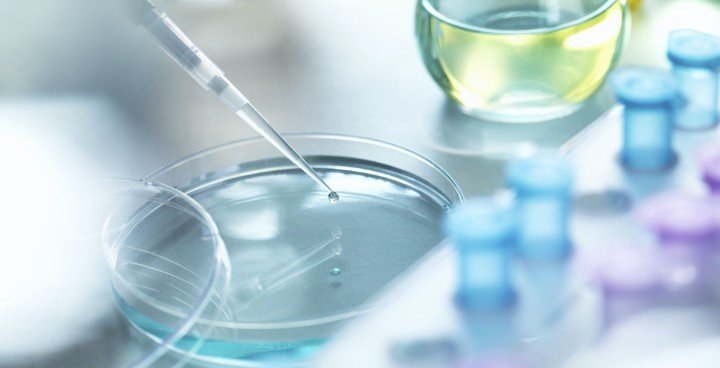"Main challenge with the surgery is the recurrence of the tumor from the cells which are left during surgery there should not be a single tumor cells left during surgery"
Therapies for breast cancer
Surgery: Surgical removal of visible cancer cells and tissues by experts to avoid spread of the tumor to other parts of the body. Amount of tissues removed depends upon the size of the tumor.
There are many types of surgeries needle biopsy, lumpectomy, mastectomy, modified mastectomy are common types of surgeries in breast cancer.
During needle biopsy minute amount of cells or tissue is removed with the help of needle under the guidance of imaging techniques.
Needle biopsy is done for the diagnostic purpose. In lumpectomy a small lump of the tumor tissue is removed for the diagnosis purpose.

"Usually surgery follows chemotherapy or adjuvant chemotherapies to further eradicate the remaining breast cancer cells and prevent the recurrence of the disease"
In mastectomy a large portion of the breast removed along with normal surrounding tissue while in modified mastectomy tumor tissue, surrounding normal tissue along with armpit lymph node are removed are removed.
Main challenge with the surgery is the recurrence of the tumor from the cells which are left during surgery there should not be a single tumor cells left during surgery.
Surgery is also associated with inflammatory complications. Usually surgery follows chemotherapy or adjuvant chemotherapies to further eradicate the remaining cells and prevent the recurrence of the disease.
Sometime radiation therapy is recommended after mastectomy to reduce the recurrence of the tumor.
"When breast cancer cells exposed to high energy radiation such as X-rays cancer cells are not able to repair the DNA damage"
Radiotherapy: It involves the administration of ionizing radiation, X-ray or gamma rays to the tumor site.
Normal cells suspend cell division when their DNA get damage by halting their DNA replication does not proceed until get repaired when the DNA damage is irreparable cells undergoes to programmed cell death.
Cancer cells are genetically unstable cells which has lost the power repairing the DNA damage for their own benefits.
When cancer cells exposed to high energy radiation such as X-rays cancer cells are not able to repair the DNA damage induced by high energy radiations and finally get died while normal cells repairing mechanism is intact and are able to repair the damage induce by these radiations.
So these radiations specifically targets cancer cells.

Gibhardt CS et. al, 2015, showed that challenging cells with ≥1 Gy X-rays or with UV-A laser micro-irradiation causes a rapid rise of H2O2 in the nucleus and in the cytosol which result in the production and glutathione-buffering, is sufficient for triggering a signaling cascade that involves an elevation of cytosolic Ca2+ and eventually an activation of hIK channels.
A course of radiation therapy is preceded by a simulation session in which low-energy beam are used to produce radiograghic images that indicate the exact beam location.
Radiation therapy is usually delivered in fractionated doses such as 180 to 300 cGy per day, five times a week for a total course of 5-8 weeks.
Success of radiotherapy depends in the difference in the radio sensitivity between the tumor and normal tissue.
Radiation therapy either used individually or in combination with chemotherapy.
Although radiation therapy is effective against many types of cancers this therapy is also associated with side effects, Fatigue and serious skin problems (dryness, itching, blistering, or peeling), GI toxicity, oropharyngeal mucositis& xerostomia, myelosuppression.
There is also possibility of developing a secondary cancer after radiation therapy.
"Radiation therapy either used individually or in combination with chemotherapy to treat breast cancer"
Chemotherapy: Chemotherapy is a treatment method for cancer with one or more chemically synthesized anti-cancer drugs which mainly targets rapidly dividing cancer cells and normal cells (epithelial cells of mouth, intestine lining).
Chemotherapy either given intravenously or orally in cycles.
Usually chemotherapy given after surgery or mastectomy to kill cancer cells which are left during surgery to reduce recurrence of tumor.

Alkylating agents, antimetabolites, antitumor antibiotic, plant alkaloids, hormonal agent, immunotherapy are the important agents of chemotherapy.
The most common chemo drugs used for early breast cancer include the anthracyclines such as doxorubicin and the taxanes ( paclitaxel and docetaxel).
These may be used in combination with certain other drugs, like fluorouracil (5-FU), cyclophosphamide, and carboplatin while for advance breast cancer docetaxel, paclitaxel, cisplatin, carboplatin, liposomal doxorubicin, mitoxantrone, vinorelbine etc.
Chemotherapy is associated with loss of appetite, hair loss, mouth sores, nausea and vomiting, low blood cell counts increases the chance of getting infection, irregular menstrual cycle and fatigue.
E.G, Myelosuppression, nausea &vomiting, Stomatitis and alopecia.
"Chemotherapy is associated with loss of appetite, hair loss, mouth sores, nausea and vomiting, low blood cell counts increases the chance of getting infection, irregular menstrual cycle and fatigue"
Hormone therapy or endocrine therapy: A gold standard therapy for ER positive breast cancers.
The main purpose of hormone therapy is to reduce the level of steroids (estrogens, androgens and progesterone) in the body or blocking the actions.
But hormone therapy does not work in ER negative breast cancer. Aromatase inhibitors, selective estrogen receptor modulators (SERMs) and selective estrogen receptor down regulators (SERDs) mainly use in hormone therapy.
"Hormone therapy or endocrine therapy is a gold standard therapy for ER positive breast cancers"
In alternate chemotherapy fallopian tube, ovary and adrenal glands surgically removed to reduce the hormone level in the body.
Tiredness, weight gain, hot flush, menopausal symtoms, digestive problems, headache, hair thinning, sweating, breast tenderness, memory problems and mood swing are associated side effects of the endocrine therapies.

Biological therapy or Targeted therapy: Targeted therapy is the use of drugs which specifically target the cancer by interfering the molecular targets of the cancer cells which have important role in growth and progression of cancer cells.
Most of the targeted drugs are cytostatic which block the cell proliferation.
Molecular targets are decided by comparing the molecular profiles of the normal and cancer cells and those proteins which are over expressed in cancer cells are selected as molecular target such as HER2/neu over expressed in ER negative breast cancer cases.
Trastuzumab, a monoclonal antibody against HER2/neu protein used to target the over expressed HER2/neu, effective therapy for the ER negative HER2/neu over expressing breast cancer cases.
"Most of the targeted drugs are cytostatic which block the breast cancer cell proliferation"
Another approach is to analyse the protein for the mutation which only found in cancer cells and specifically target the mutated proteins.
Target therapy includes hormone therapies, signal trasducer inhibitors (gefitinib), gene expression modulators, apoptosis inducer, angiogenesis inhibitors (bevacizumab), cancer vaccine, gene therapy and immunotherapies.
Toremifene, Trastuzumab, fulvestrant, exemestane, lapatinib , letrozole, pertuzumab, ado-trastuzumab emtansine, palbociclib, Everolimus, tamoxifen, anastrozole are the targeted drugs approved for the treatment of breast cancer.
Skin problems, high blood pressure, problem with blood clotting and wound healing are the associated side effects of the targeted therapies.

Bone Directed therapy: When breast cancer cells metastases to bone serious complications arises. Bisphosphonates (pamidronate, zoledronic acid) and denosumab are mainly used in such conditions. Biphosphonates mainly increases the bone strength and reduces bone thinning.
Osteonecrosis is serious side effect with the use of biphosphonates.
Denosumab another drugs for the bone directed therapy it is more effective than biphosphonates. Low blood calcium and phosphates are the side effects associated with Denosumab.
Share